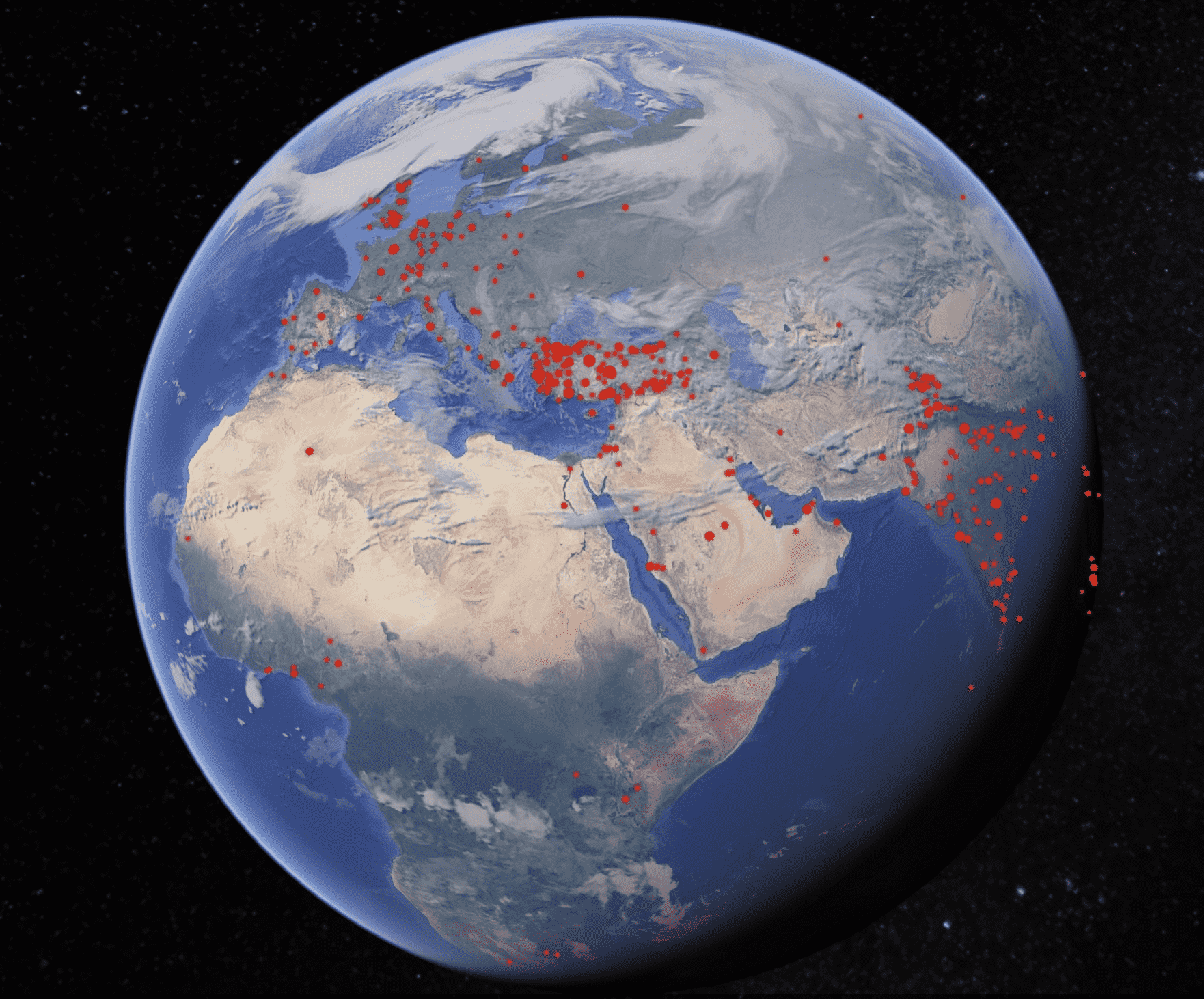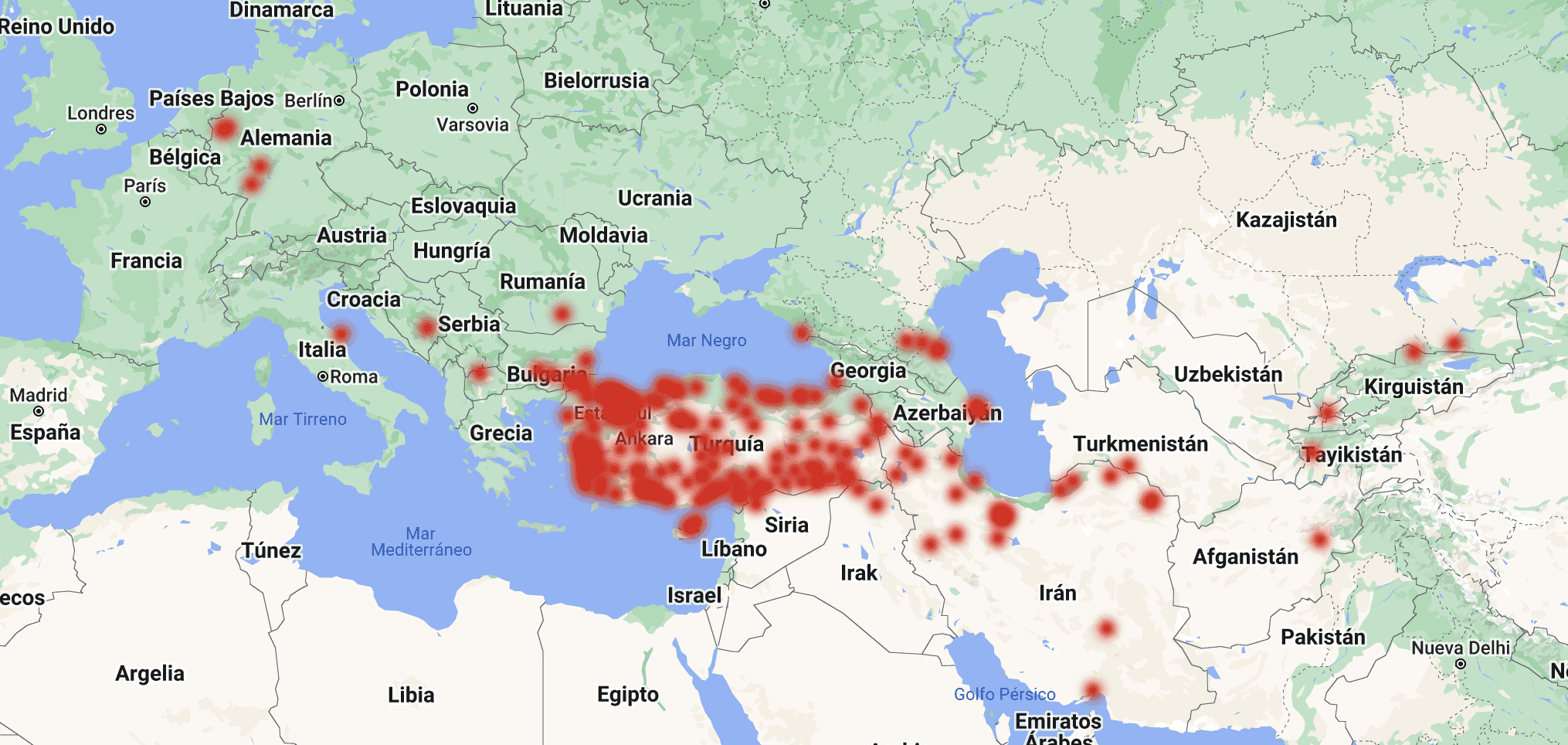On early Monday (February 6th), multiple earthquakes (the strongest being of 7.8 magnitude) rocked southeastern Turkiye and northern Syria. 72 hours later, as we write these lines, the death toll has overpassed 117,200 people, and dozens of thousands of people are on urgent need for medical assistance, as hundreds more remain trapped under the rubble, in freezing winter conditions. The first 72 hours are fundamental to find people alive, and the cold has made that window smaller.
The crisis has prompted immediate support from the international community, with dozens of countries and international organizations disbursing money, equipment, and expertise to support those in need, particularly in Turkiye. On Wednesday evening, EU chief Ursula von der Leyen announced via twitter her plans to host a donor conference early March to marshal international aid for Syria and Turkey.
In the image below, we can see the social media engagement around the earthquake, as per February 8. Friends and families of the victims used tools like twitter to help to identify where people were buried and alive, hoping it would speed their rescue. The interactions also reflect families and friends trying to make sure their beloved ones were alive (also in countries like Belgium and Germany, where big Turkish communities live). The image also allows us to see the difference of internet access between Turkey and Syria (where there is barely any social media interaction).

Thousands of rescuers from around the world are already in Turkey. Interviewed by Deutsche Welle, Jesus Valdez, building engineer and Mexican CEO at Miyamoto International, said the impact of international rescue groups always remain short vis a vis the catastrophe. He also said that a hundred-specialists group has the capacity to help only between 3 and 4 collapsed buildings. So far, official estimates calculate that just in Turkiye alone, over 6,000 building have collapsed. Due to the war, there is not any balance of damaged buildings in Syria.
Despite sharing a catastrophe, both countries are already experiencing completely different scenarios, both in information access, support and international engagement, as we will try to describe below.
Turkiye
The big picture: Support for Turkiye has been announced by over 60 countries and international organizations. The government has been quick to work with experts from around the world to provide equipment to search for survivors, and to distribute material and support to those who remain homeless.
The region lies in a zone where three tectonic plates meet, and therefore is known to be one of the most earthquake prone in the world. Hope is fading to find survivors, and outrage for the bad quality of thousands of buildings seems to start rising up. The latest construction regulations to prevent disasters like this one was approved in 2018, but “construction amnesties” offered legal exemption to 70,000 to 75,000 buildings in the affected zone. Finch estimated today that the reconstruction in both countries will cost between 2 and 4 Billion dollars.
Why it matters: Turkiye is expected to celebrate elections in May. The government has already declared a 90 days of emergency rule for the affected regions. President Erdogan visited the area near the epicenter 48 hours after the earthquake. So far, he as kept control over the narrative, dismissing any criticism to the aid deployment, or any government’s responsibility over the collapsed buildings, and promising a quick rebuilt and support for those at stress. We can expect a strong response to the disaster in the following weeks as the elections arrive, but we will also see how a devastated population reacts to it.
Syria
The big picture: After 12 years of war, the country is divided in three parts: the government-controlled areas, a part controlled by the US backed Kurdish forces in the northeast, and a small portion in the northwest part controlled by the rebels, where nearly 4.5m people live, including 3m people displaced from somewhere else. It is in Idlib, the rebel part, as well as Aleppo, under government control since 2016, where the earthquake had its strongest impact. Both provinces were already overwhelmed by bombing and shelling. In the case of Idlib, the city was shelled even on the day of the earthquake, while Aleppo has remained unsafe since the devastating Syrian-Russian attacks during the war, with buildings collapsing frequently due to lack of maintenance, and government-linked militias looting and forcing those who have remained to pay bribes.
Why it matters: Donor fatigue and a 12-years war has left the region with zero emergency preparedness. Already before the earthquake, 4.1m people in the region were dependent of humanitarian assistance.
The image below shows the social media/internet interaction in the region today. The earthquake has wiped out all internet and electricity in the region, therefore assessment or support is increasingly challenging. Activists insist that no aid has made it to rebel-held Idlib.

So far, thanks to Russia’s role supporting Syria in the UN Security Council, the only way to bring assistance to the rebel zone is via Bab al Hawa, the crossing border between Syria and Turkey, authorized for UN and international organizations humanitarian aid. After the earthquake, the route remained closed for almost three vital days. It was only today when United Nations units were able to reach out Idlib. The World Food Program has informed it has enough food to feed people in the region for one week, however, every convoy that passes towards Syria has to be approved by the Turkish government, and considering the crisis Turkiye is facing right now, it can be expected that aid towards that area will face delays.
To make things more difficult, the Syrian government has officially asked for humanitarian assistance, but has made clear it intends to be the only one to distribute and control the economy of the aid. Something impossible to be accepted by all nations, except its few allies. Therefore countries willing to support are facing a difficult decision: either to work with the Syrian government, or to deliver support through it.
So far, the majority of governments have mentioned they will channel their aid towards Syria via UN programs or international organizations like the White Helmets. However, The White Helmets have around 3000 volunteer staff deployed in the region with no medical infrastructure to support them, having to attend 4.5 million people.
Last year, illegal Syrian immigration towards Europe rocketed 100%. Is this the beginning of a new era of a Syrian mass migration?
